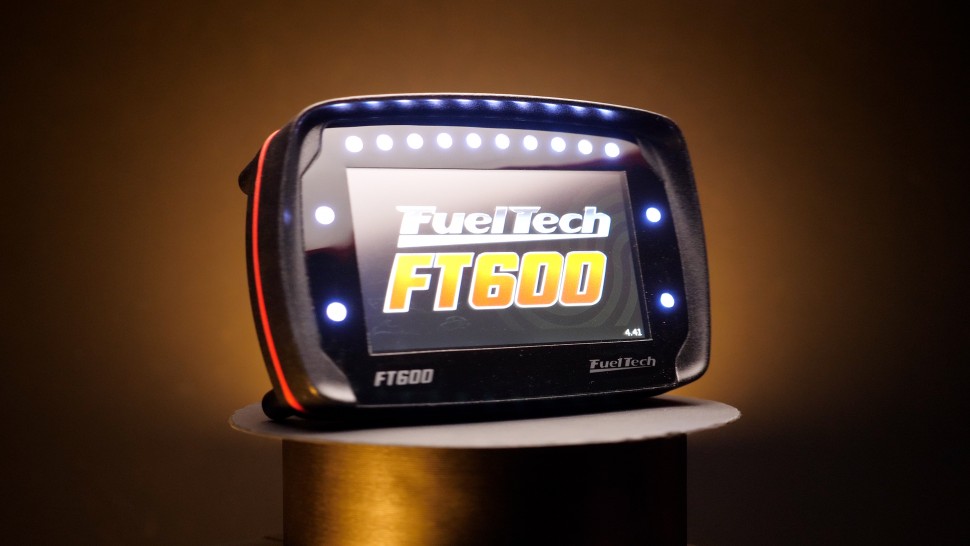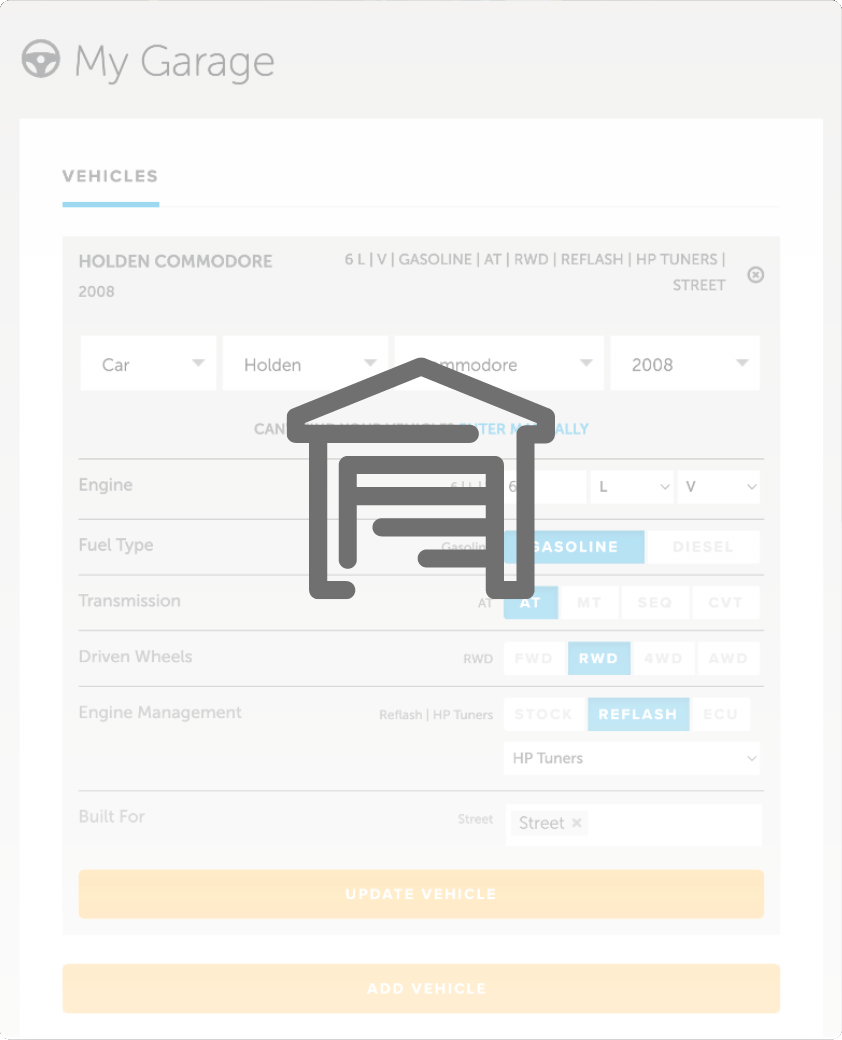| 00:00 |
This final portion of the tuning process is generally the most fun, and by far the shortest.
|
| 00:05 |
At this point, the TCM should be pretty well tuned, aside from testing wide open throttle, or perhaps we've tested wide open throttle as part of engine tuning and now it's time to make TCM adjustments.
|
| 00:18 |
If you haven't yet completed the engine tune by this point, now is the time.
|
| 00:23 |
Keep in mind torque and rev limits in both the ECU and TCM may need to be adjusted.
|
| 00:30 |
Torque modeling in the ECU must also be correct.
|
| 00:34 |
When it comes to torque modeling, if we're only making a modest increase in torque over stock, and we're not significantly altering cam phasing or engine displacement, and cylinder flow hasn't changed drastically, forced induction hasn't been added, then the factory torque calculation tables should still be reasonably accurate.
|
| 00:55 |
With more significant mechanical changes, the need to not only rescale torque tables to encompass higher values, but accurately represent engine output becomes critical.
|
| 01:07 |
Ideally this is done on a dyno so we can measure torque output.
|
| 01:12 |
Note that torque values in the ECU are generally at the crank, so keep in mind there will likely be a discrepancy between ECU expected torque and dyno monitored torque at the hubs or tires.
|
| 01:26 |
If we've achieved more torque than expected, or reached the modest torque limit values that we started with, and are now confident to press on further, it's time to update the torque limits again.
|
| 01:38 |
As always, I suggest using reasonable limit values rather than maxing limits out.
|
| 01:44 |
If the vehicle is being limited to less than your desired torque level, then increasing one limit at a time and testing to see if a torque increase is allowed can be a useful tool in diagnosing which limit we're actually running into.
|
| 02:00 |
Once we've identified the offending limit, we can adjust the various limits to retain safety without impeding performance.
|
| 02:07 |
As we finalize the ECU tune, it's important that we remember to adjust rev limits and wide open throttle shift points as needed to make use of our new optimized power band.
|
| 02:18 |
In order to complete wide open throttle pulls all the way to the rev limiter, the wide open throttle shift points need to be moved up beyond the limiter so we can complete single gear pulls.
|
| 02:32 |
Wide open throttle shift table points are usually easy to find in software and much more simple to adjust than part throttle shift tables.
|
| 02:40 |
In some cases, there will be both an engine speed for wide open throttle shift and a vehicle or output shaft speed for wide open throttle shift for each gear.
|
| 02:51 |
Generally, a wide open throttle shift will occur when either the engine speed or vehicle speed or output shaft speed criteria are hit.
|
| 03:02 |
Whichever comes first will cause an upshift.
|
| 03:06 |
As with the part throttle shift tables, we may find different wide open throttle shift values for each drive mode in the stock tune.
|
| 03:14 |
Now, is the time to decide if that's something we want or we perhaps want them all to be the same and set them accordingly.
|
| 03:23 |
After the engine tune has been completed and we're ready to put optimized wide open throttle shift points in place, we should keep in mind that shifting takes time.
|
| 03:33 |
Especially at wide open throttle, we need to request shifts soon enough to leave time for the shift to execute before the rev limiter is reached.
|
| 03:44 |
For example, if the rev limiter is at 3500 rpm, it doesn't make sense to start a shift at 3500 rpm or barely below it.
|
| 03:54 |
You'd just be banging up into the limiter and slowing acceleration, as well as causing unnecessary engine wear.
|
| 04:02 |
Depending on the time it takes each particular transmission to shift and the acceleration rate of the vehicle in each gear, wide open throttle shift points will need more or less of a margin to the engine rev limit.
|
| 04:15 |
Generally, we'll need to give the TCM more time to shift in lower gears than higher gears because the engine will accelerate through shorter gears and approach the rev limiter more quickly.
|
| 04:27 |
For example, we may need to set our wide open throttle shift point 500 rpm below the rev limiter in first gear, but only 200 rpm below the limiter when shifting into top gear.
|
| 04:40 |
It's always best to start with shift points that are a bit low and data log a wide open throttle shift.
|
| 04:46 |
That allows you to observe shift time, slip indicated by speed differentials between coupled components in the transmission, rpm flare, and look for warnings or check engine codes that may appear.
|
| 05:01 |
If the transmission is slipping, we can increase shift time and line pressure if possible and prudent, then repeat the test.
|
| 05:10 |
If there's still excessive slip, the next step is to reduce torque limits until the transmission can successfully complete shifts repeatedly.
|
| 05:20 |
We may also want to reduce the torque we're trying to make so we aren't running the engine up against torque limits that may overreact.
|
| 05:29 |
This is also an opportunity to tune shift time and firmness at wide open throttle if desired by repeating the process explained in the shift behavior module.
|
| 05:40 |
We can now finalize wide open throttle shift points and behavior by gradually increasing the shift point values closer to the rev limiter or the engine speed we want to complete the shift by.
|
| 05:53 |
I've been mentioning shifting near the rev limiter and shifting at higher rpm is desired in many applications for maximum acceleration, but some engines will perform better with lower shift points and some users may simply not want to rev the engine up near its limit.
|
| 06:09 |
It's important to take all of that into account and choose shift points that best suit your needs.
|
| 06:15 |
At this point, depending on the system we're working with, we may have altered dozens of tables or just a few.
|
| 06:22 |
To be safe, this is a good time to go back and review any changes for potential errant values or data entry mistakes in cells we may not have encountered during our testing.
|
| 06:34 |
Then test the vehicle under as many varied conditions as possible while observing transmission shifting and torque converter clutch lockup behavior, noting any negative behaviors and then refining the TCM calibration until you're satisfied.
|
| 06:49 |
If we're tuning the vehicle for ourselves, this is pretty straightforward.
|
| 06:53 |
If we're tuning for someone else though, at this point it pays to think back on what they asked for and try to make sure they're being delivered what they want.
|
| 07:04 |
And with that, the entire process is complete.
|
| 07:07 |
So, to recap, here are the five main steps in broad terms.
|
| 07:11 |
First, we perform initial setup on the ECU, then the TCM.
|
| 07:16 |
Then, with the engine running well enough to perform partial throttle transmission adjustment, we work on shift scheduling and drive mode tuning.
|
| 07:25 |
After that, it's time to move on to shift behavior and torque converter clutch tuning before wrapping it up with final ECU and TCM wide open throttle tuning and final test driving.
|
| 07:39 |
Transmission tuning has many facets and considerations, so I encourage you to re -watch any portion of the process you're unsure of or don't entirely recall.
|
| 07:49 |
Then I suggest you check out our worked examples so you can see it all in practice on a real world project.
|





